Champagne By Any Other Name: Two Dozens Rose-Tinted Champagne. Eighteen Producers Show Different Styles And Capture Diversity of Soils.
Sugar and spice are nice, but you prefer a bit more ‘brut’ with your Valentine’s Day sparkle, you may be pleasantly surprised to learn that Champagne Rosé is often drier than it’s golden counterpart. Sweeter rosé styles exist, of course, but they are the minority, and for the most part, the candy-pink hue is a saccharin illusion.
Not only that, but creating a rosé is more labor intensive than a standard blend, and given that méthode champenoise is already an arduous and exacting process, this explains the prestige, rarity and associated price tags of the top cuvées.
This year, we are rolling out the pink carpet for our entire ‘dry suite’ of Rosé Champagnes. Many are from our favorite smaller Houses—grower Champagnes made by Chefs de Cave who do not seek to compete with the window-dressers (Taittinger, Moët and Chandon, Veuve Clicquot, et al) on any level but quality. Where terroir cooperates, an obscure but dedicated cellar master can often match (and even outdo) a famous one, and without the notoriety, the final tariff on the bottle may be more in line with baseline sanity.
These Champagnes are year-round gems, but are particularly appropriate for Valentine’s Day. Our list is arranged geographically, east to west, to offer a palatable overview of the entire growing region, especially as it relates to the cultivation of rosé’s workhorse duo, Pinot Noir and Munier. Tracking this path across Champagne’s diverse landscape is an educational journey; we’d say that sampling the wares is a little sugar to help the medicine go down, but since these wines are exquisitely dry, we can’t.
The Champagne Grape Palette: Showtime For The Two Red Varieties
99% of the vineyard space in Champagne is given over to a trio of grape varieties, and of these acres, 72% are planted to red-skinned grapes. Folks less familiar with the styles and methodology behind Champagne produced entirely from Pinot Noir and/or Meunier, may find it incongruous that even in the absence of Chardonnay, the resulting wines are white.
But like most red-skinned grapes, both Pinot and Munier produce clear juice, and with minimal skin contact to leech out color, the end wine is also white. This holds true in regions outside of Champagne as well, but the relatively cool northern climate tends to produce less anthocyanins—red pigment—which exaggerates the effect.
As a result, Champagne produces much ‘Blanc de Noir’ and no ‘Noir de Noir.’
Though cool, Champagne’s climate is not homogenous, and certain areas are much better suited for its red-skinned stars. Pinot Noir is the dominant grape in Montagne de Reims and Côte des Bar, thriving so well in the cool, chalky soil that it is nick-named ‘Précoce’ for its ability to ripen early. Munier, on the other hand, prefers a different habitat, doing well in soils that contain more clay, such as in the Marne Valley, and being less susceptible to frost, may cope well under harsher climatic conditions.
The Different Shades Of Rosé
Not all pink is created equal and the color palette of Champagne Rosé is a varied as there are producers. Much is the result of the mode of production—easily broken down into two approaches: The more common method is to simply add a bit of still red wine to the blend, generally between 7% and 15%; this is referred to as ‘assemblage.’ ‘Saignée’ is a technique that involves bleeding a bit of color from the skins of the red grapes when they are pressed.
Both styles serve their purpose well and one does not necessarily yield a fuller-bodied style than the other, although saignée Champagnes may show brighter colors in the glass and taste more ‘vinous’ on the palate.
Not only can Champagne Rosé be made in infinite shades, even these are subject to change. After a couple of days in the tank, color starts to fade as anthocyanins bind to other molecules, generally tannins or sulfites. Acidity may affects this balance as an acidic wine tends to be brighter, while a less acidic wine tends to showcase darker shades. And then, of course, since a well-made rosé may have notable aging potential, there is the inevitable color mutations that cellaring brings as youthful pink tones move into the orange spectrum.
The Bigger Picture: Champagne’s Landscape
Having been defined and delimited by laws passed in 1927, the geography of Champagne is easily explained in a paragraph, but it takes a lifetime to understand it.
Ninety-three miles east of Paris, Champagne’s production zone spreads across 319 villages and encompasses roughly 85,000 acres. 17 of those villages have a legal entitlement to Grand Cru ranking, while 42 may label their bottles ‘Premier Cru.’ Four main growing areas (Montagne de Reims, Vallée de la Marne, the Côte des Blancs and the Côte des Bar) encompass nearly 280,000 individual plots of vines, each measuring a little over one thousand square feet.
Beyond the overview lies a permutation of particulars; there are nearly as many micro-terroirs in Champagne as there are vineyard plots. Climate, subsoil and elevation are immutable; the talent, philosophies and techniques of the growers and producers are not. Ideally, every plot is worked according to its individual profile to establish a stamp of origin, creating unique wines that compliment or contrast when final cuvées are created.
Champagne is predominantly made up of relatively flat countryside where cereal grain is the agricultural mainstay. Gently undulating hills are higher and more pronounced in the north, near the Ardennes, and in the south, an area known as the Plateau de Langres, and the most renowned vineyards lie on the chalky hills to the southwest of Reims and around the town of Epernay. Moderately steep terrain creates ideal vineyard sites by combining the superb drainage characteristic of chalky soils with excellent sun exposure, especially on south and east facing slopes.
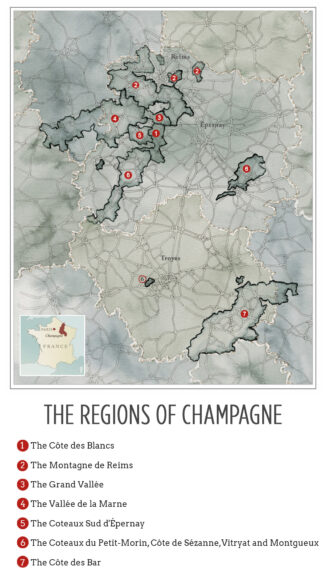
The Villages of
The Côte des Bar
Reims lies at Latitude 49°5, and Épernay at 49°; in the northern hemisphere, it is generally considered difficult to obtain quality grapes above the 50th parallel. The ninety mile cushion enjoyed by Côte des Bar has a pronounced effect on the grower’s ability to ripen Pinot Noir; as a result, 86% of the vineyards are planted to this varietal. Despite this, the soils of the Côte des Bar is closer to that of Chablis—Kimmeridgian marl topped by Portlandian limestone, whereas the vines near Épernay and Reims tend to be planted in Cretaceous chalk. Chablis, of course, is ground zero for Chardonnay, and it is humidity coming from the Atlantic in the west as well as continental influences with higher temperatures that make the Côte des Bar Pinot Noir country through and through. That said, local climate conditions, slope and orientation are extremely varied throughout region, and produces many individual micro-climates, so each vigneron needs to be fully attentive to his own terroir in order to make the most of it. Côte des Bar features a host of small producers whose output varies almost as much as the local landscape.
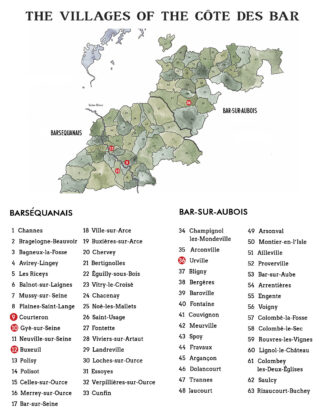
Champagne Fleury (Village Courteron)
If any estate is anchored to the Côte des Bar it is Champagne Fleury, whose Courteron vineyards span 38 acres on a clay-limestone hillside along a tributary of the Seine. But, as the first Champagne house to convert to biodynamics (1989), Jean-Pierre Fleury proved that a producer could have roots in the earth while raising the mainsail to innovation.
Today, his son Jean-Sébastien Fleury has taken the winemaking rudder, and is tacking toward the future with respect for the unique situation of the Côte des Bar, which is closer to Chablis than to Reims: “The key is soil health,” he says. “We must keep the earth healthy. The structure of the soil gives back the essence of the terroir.”
In this endeavor, he is joined by his younger brother Benoît, who came on board in 2010 to manage the vineyards, intent not only on maintaining biodynamics, but also researching soil biology, biodiversity and experimenting with agro-forestry. A third sibling, Morgane, initially studied to be an actress and a sommelier in Suze-la-Rousse, runs ‘My Cave Fleury’ in Les Halles (made famous by Émile Zola’s famous novel of the same name) where she specializes in biodynamic wines.
The estate encompasses ten plots planted primarily to Pinot Noir, the oldest planted in 1970, and new cuttings are established every year to maintain the vitality that younger vines bring to Champagne. The ultimate goal, according to Jean-Sébastien is a wish “to let the nature and its rhythms express themselves.”
 Champagne Fleury ‘Rosé de Saignée’, Côte-des-Bar Rosé Extra-Brut ($76)
Champagne Fleury ‘Rosé de Saignée’, Côte-des-Bar Rosé Extra-Brut ($76)
The grapes see a short period of maceration before pressing, the saignée, or bleeding, method. Fleury style leans toward a light, lyrical sparkling wine whose dosage has been gradually reduced over the years. The wine is 100% Pinot Noir from the 2018 harvest, from vines with an average age of 30 years.
The wine is redolent of strawberry compote and vanilla, with a rich palate that maintains both elegance and delicacy.
Bottled July 2019; disgorged October, 2022; dosage 3.4 grams/liter.
Champagne Jean Josselin (Village Gyé-sur-Seine)
Gyé-sur-Seine is a small village in the Aube department with a population under 500 and about the same number of acres planted to Pinot Noir. The commune is as picturesque as its name, as are the hillsides where Jean Josselin worked the soil—Beauregard, Davasgné, Cosvigne—before founding the house in 1957.
Today, the estate is run by his son Jean-Pierre, grandson Jean-Félix and granddaughter Lucile, who have maintained the rigid standards of their forebears. At times, admittedly, they have struggled to remain independent producers rather than succumb to the temptations dangled in front of them by the grand marques; financial incentives that saw one producer in the village recently sold to Moët et Chandon. Remaining independent has involved extensive upgrades, including the new production facilities—a modern building about a mile away from the old domain. The family also takes pride in its commitment to sustainable viticulture, and is proud to be certified to ‘Terra Vitis’, a label that subjects the estate to regular audits scalable to the size of the property—in the case of Champagne Josselin,18 parcels scattered over 30 acres.
Says Jean-Pierre: “In the past, Josselin Champagnes were mostly made from Pinot Noir, but we have expanded our range with a blend of the three traditional varietals as our Blanc de Blancs, thus exploring the other varietals that grow well in specific locations. We are a small producer—no more than 100,000 bottles a year—but we are always looking to improve. For instance, my son Jean-Félix, who joined the family operation in 2010, has created a new cuvée, as yet unnamed. It’s a secret waiting to be uncovered, as many ideas arise and provoke discussion between father and son! The adventure is far from over!”
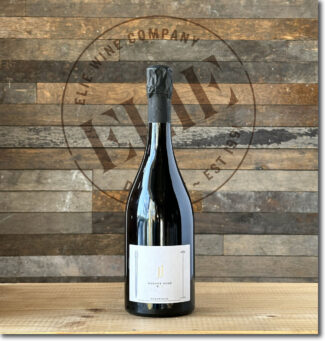 Champagne Jean Josselin ‘Audace R.19’, Harvest 2019 Côte-des-Bar Rosé Brut ($62)
Champagne Jean Josselin ‘Audace R.19’, Harvest 2019 Côte-des-Bar Rosé Brut ($62)
An audaciously dark rosé made with 100% Pinot Noir from the Gyé-sur-Seine lieu-dit ‘Beauregard’ using the 2019 vintage. The color is the result of a two-and-a-half day maceration period prior to pressing followed by complete malolactic fermentation, three extractions and one filtration carried out before bottling. The wine is textured with layers of red currants and raspberries and touch of licorice offset by puckery Pinot tannin and shivery acidity.
Bottled July, 2020; disgorged September, 2021.
Champagne Vincent Couche (Village Buxeuil)
With three generations of Champagne-makers behind him, Vincent Couche has plenty of laurels on which to rest—if he was so inclined. He’s not; when he took over the family estate in 1999, he began immediately to restructure the 32 acres and reassess the cellar work, first by replanting his vineyard under the direction of terroir specialist Claude Bourguignon. The overarching philosophy that drove all the improvements is biodynamics.
Vincent explains, “Embracing biodynamics has been the name of the game since 1999, but certification takes time, and it wasn’t until 2008 that we were certified biodynamic—the first cellar and fields to receive Demeter certification in Champagne. Healthy soils and healthy vines is an obsession of mine, as is making wine without additives. At harvest, I pick by taste and touch, generally a week or more than my neighbors; I refuse to chaptalize and look for need sugar levels than is the norm. in the cool deep cellar wines are fermented and aged in oak and stainless steel without added yeast or nutrients and the wines don’t see any additions.”
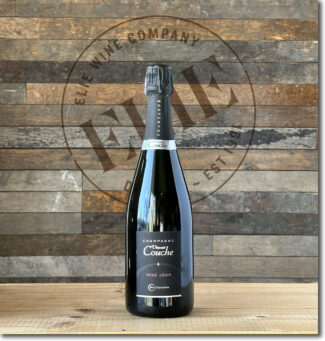 Champagne Vincent Couche ‘Rosé Désir’, Côte-des-Bar Rosé Extra-Brut ($62)
Champagne Vincent Couche ‘Rosé Désir’, Côte-des-Bar Rosé Extra-Brut ($62)
A rosé d’assemblage, 95% Pinot Noir with 5% Chardonnay grown in the villages Montgueux and Buxeuil—the Pinot is vinified via carbonic maceration and the wine was disgorged 07/2022; dosage at level of Extra Brut and bottled without sulfite. A bright, full-bodied rosé showing ripe pie cherries, pomegranate and pink grapefruit.
Disgorged July, 2022.
Champagne Drappier (Village Urville)
“Our vineyards are like family archives that perpetuate our history,” says Michel Drappier. “We grow heirloom grape varieties that deserve to be remembered: Fromenteau, Arbanne, Petit Meslier and Blanc Vrai.”
His son Hugo, who is responsible for viticulture and oenology at the estate, adds, “But since we planted our vineyard in Urville with Pinot Noir, this has become the variety that now runs in our veins and we manage it according to organic and natural practices.”
The vineyards, which the family considers ‘the heart of the Drappier identity’, spans 150 acres (with more under contractual arrangements with other growers) and reflects this passion for Pinot: 70% of the estate is planted to Pinot Noir, supplemented by Pinot Meunier at 15%, Chardonnay at 9% and old grape varieties at 6%.
Hugo says, “Proximity to the vines is necessary to keep a close eye on how they evolve and interact with their environment. Because our vineyards are all local, we have stepped up our sustainable approach to viticulture. In the cellar, we work with Chef de Cave Elysé Brigandat; the blending process is the meticulous, respecting the style of each grape variety, the spirit of each terroir and sometimes even the whisper of each individual climat. Unlike many houses, we do not focus on keeping the wine the same each vintage; instead we seek to bring out the maximum of each wine as it is produced. A portion of the yeasts used in the fermentation stage are selected and cultivated at the estate and have been baptized ‘Drappier Fermentum Meum.’”
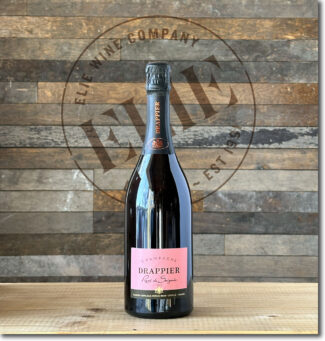 Champagne Drappier ‘Rosé de Saignée’, Côte-des-Bar Rosé Brut ($69)
Champagne Drappier ‘Rosé de Saignée’, Côte-des-Bar Rosé Brut ($69)
100% Pinot Noir is used for this saignée rosé in which two days of maceration are followed by low-pressure pressing, then natural settling and malolactic fermentation. 5% of the wine is aged in foudre. On the nose, the wine reveals notes of brioche, sweet pastry and vanilla alongside aromas of ripe berries and raspberry coulis. A crisp, rounded palate leading into a mineral-tinged finish.
Dosage 6 grams/liter.
The Villages of
The Côte des Blancs
One of the 17 areas that parcel out the Champagne region into terroirs (at least according to the scheme used by the Union de Maisons de Champagne), the Côte des Blancs derives its name from the white chalk that makes up its hillsides. It is perhaps poetic that the predominant grape variety here is Chardonnay in all but a small corner in the extreme south called Vertus, where Chardonnay’s supremacy is challenged by Pinot Noir. And even in Vertus, Pinot Noir makes up less than 10% of the vineyards.
There is a commercial reason for this, according to local vineyard owner Pascal Doquet: “A hundred years ago, 80% of the vineyards in Vertus were Pinot Noir. People replanted as fashion changed and they realized they could earn more money from Chardonnay. A hundred years from now, who knows?”
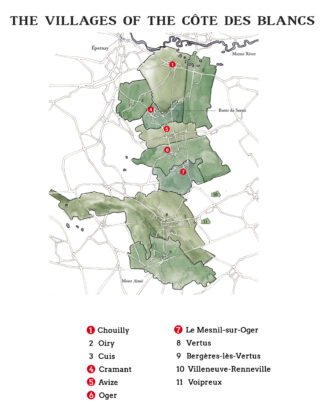
Champagne Pertois-Moriset (Grand Cru Le Mesnil-sur-Oger)
For some of us, a match made in Champagne is synonymous to one made in heaven, and for Champagne Pertois-Moriset, it is family history. The house was born in 1951 with the nuptials of Yves Pertois from Cramant and Janine Moriset from Mesnil, both third-generation growers, who soon began bottling under their own label.
Today, the couple’s granddaughter Cécile and her husband Vincent Bauchet manage 50 acres divided between Chardonnay grown on Grand Cru sites in the Côtes de Blancs, plus a 60/40 split of Pinot Noir and Chardonnay in the Côte de Sézanne (including one parcel that borders Olivier Collin’s famed Les Maillons). Joined at the hip to organic and sustainable practices, Pertois-Moriset has become known for single-village expressions of renowned terroirs like Oger, Villeneuve, Cramant, and Chouilly, plus single-parcel bottlings from lieux-dits including Les Jeamprins, Les Jutées, and Les Hauts d’Aillerands. Vincent maintains that in every endeavor, the estate is attentive to the biodiversity that surrounds it: “If the years allow it,” he says,” no chemical inputs are applied on the vine. The vines are naturally grassed in winter, and in summer the soil is ploughed.”
 Champagne Pertois-Moriset ‘Rosé Blanc Collection’, Côte-des-Blancs Grand Cru Rosé Brut ($72)
Champagne Pertois-Moriset ‘Rosé Blanc Collection’, Côte-des-Blancs Grand Cru Rosé Brut ($72)
And interesting assemblage of 92% Chardonnay from Grand Cru vineyards in Le Mesnil sur Oger, Oger, Cramant and Chouilly, and 8% Pinot Noir from Grand Cru vineyards in Bouzy. Aging is done in the cellar for 36 months and dosage is 3 grams/liter. A fine bead and an elegant color, the wine has a bouquet of creamy strawberries and Morello cherries and is forthright on the palate slightly sharp with a beautiful combination of structure and freshness.
Champagne JL Vergnon (Grand Cru Les Mesnil-sur-Oger)
In this small 12-acre estate in the heart of the Grand Cru village of Le Mesnil-sur-Oger, Didier Vergnon and his son Clément have worked tirelessly to organic farming, harvesting only balanced and ripe grapes. They have eliminated both chaptalization and malolactic fermentation, and prefer a low or zero dosage. The brilliant winemaker Christophe Constant has been at their side, both as cellar master and now, as consultant.
Of the property, Didier says, “Our domain extends over several terroirs, the majority in le Mesnil sur Oger, classified Grand Cru, Blanc de Blancs. We also draw from vineyards in Oger and Avize, and also vines in surrounding Premier Cru villages Vertus and Villeneuve.”
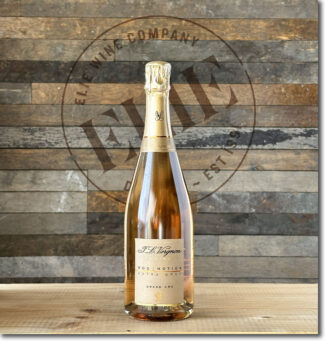 Champagne JL Vergnon ‘Rosémotion’, Grand Cru Rosé Extra-Brut ($89)
Champagne JL Vergnon ‘Rosémotion’, Grand Cru Rosé Extra-Brut ($89)
A scant 2000 bottles of this Grand Cru rosé were produced; 90% Chardonnay from Mesnil s/ Oger, Oger and Avize and 10% Pinot Noir from Mailly Grand Cru. 20% of reserve wine was aged 3 months in oak barrels and 80% of single-year in steel tank. The wine is a delicate Creamsicle color and shows currants and pomelos on the nose, with notes of strawberries, saffron and biscuits reflecting the long aging on lees.
Disgorged June, 2019.
The Villages of
The Coteaux Sud d’Épernay
The Coteaux Sud d’Épernay is Meunier-rich, with 47% of its 3000 acres planted to this variety, which is sometimes imagined as an ‘also ran’ in Champagne. In fact, Meunier is suited for soils that contain more clay and in terroirs with harsher climatic conditions since it buds late and makes it more resistant to frost. Sandwiched between the powerhouse wine regions Côte des Blancs and Vallée de la Marne, the Coteaux has an identity removed from either one; its terroir is distinctly different from the clay-heavy soils of the Marne and lacks the chalk of that puts the ‘blanc’ in the Côte des Blancs.
Phrasing it succinctly is Laherte Frères proprietor Aurélien Laherte: “Our wines show more clay influence than those of the Côte des Blancs and they are chalkier than the wines of the Vallée de la Marne.”
In short, these Champagnes are uniquely situated to offer the best of both worlds. As a result, the Coteaux Sud d’Épernay has long fought for recognition as entity unto itself, not necessarily a sub-region of its big brothers on either side.

Champagne Laherte Frères (Village Chavot-Courcourt)
That Champagne is, above all, a style of wine should be obvious, but a common misinterpretation (fueled in part by tradition and in part by marketing) removes it from viniculture and places it on a pedestal of the imagination.
Nothing wrong with this, of course, so long as the ground floor remains intact.
Aurélien Laherte, along with his high school friend Raphael Bérèche, would like to see these ideas put into context. A group of Champagne’s more progressive producers, including Agrapart, Marie-Courtin, Vincent Laval and Benoît Lahaye, gathers each spring to taste the ‘vins clairs’—wines meant to become Champagne, but having not yet undergone the bubble-creation process. These are not necessarily ‘still wines’ in that they are not meant to stand on their own merits, but have terroir-transparency profiles to make them suitable for top-shelf sparkling versions.
Situated largely in the Côteaux Sud D’Épernay, Laherte vineyards themselves total 26 acres subdivided into 75 separate parcels. Seven of these are farmed biodynamically and certified organic, with the rest farmed either ‘uncertified organic’ or sustainably. Each produces detailed wines that the estate seeks to showcase individually.
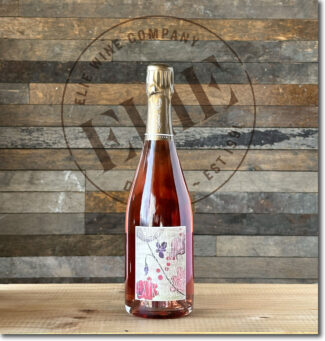 Champagne Laherte Frères ‘Rosé de Meunier’, Rosé Extra-Brut ($61)
Champagne Laherte Frères ‘Rosé de Meunier’, Rosé Extra-Brut ($61)
100% Meunier, the wine is sourced from vineyards in Chavot and Vallée de la Marne (lieux-dits Le Breuil and Boursault) with an average age of 25 years for the Meunier vinified white and more than 40 years for the parcels selected for the red wine. It is a blend of 30% macerated Meunier, 60% white wine from Meunier and 10% still red Meunier. As a result, it uses both methods of Champagne rosé creation, assemblage (blending) and saignée (bleeding).
Disgorged March, 2023; dosage 2.5 grams/liter.
 Champagne Laherte Frères ‘Les Beaudiers’, Harvest 2019 Rosé de Saignée Extra-Brut ($91)
Champagne Laherte Frères ‘Les Beaudiers’, Harvest 2019 Rosé de Saignée Extra-Brut ($91)
100% Meunier from the ‘Les Beaudiers’ lieu-dit, planted in 1953, 1958 and 1965 on shallow clay and silty soil with chalk beneath. As always, Laherte’s methods include organic maintenance, short pruning for a limited production and regular ploughing. Fermentation takes place in old Burgundy barrels and relies on old-school hand-disgorgement. The wine shows creamy red cherries, kirsch, buttered toast with strawberry jam and a bright, flinty spine.
Disgorged Nov., 2022; dosage 2 grams/liter.
Champagne Pascal Lejeune (Village Moussy & Vinay, Premier Cru Pierry)
Beating swords into ploughshares is a Biblical injection that Pascal Lejeune takes literally—he left his career in the military and gave himself to the vine. It didn’t hurt that he fell in love with a Champagne grower’s daughter: Pascal’s wife Sandrine hails from a family that has been growing grapevines in Moussy (where more than half of the vineyard’s grapevines are located) on the south-facing slopes of Épernay since 1910. Originally a side operation, not an essential part of the family’s activities, Sandrine’s great grandfather Edmond played an active part in creating the Moussy cooperative.
In 1995, when Pascal and Sandrine took the reins, their aim was to usher in a new era by enlarging the vineyard area into nearby terroirs, and by enriching the range of offerings via new cuvées: As a brand, Champagne Pascal Lejeune was born. Says Pascal, “I believe I have a responsibility and commit myself collectively to our business and our terroir in order to perpetuate and monitor developments for our children and future generations. This requires a sincere respect for people, nature, our vines, our soils, and careful work in order to obtain quality grapes. To offer you the best that nature offers us, our vintages are very different, there is something for every occasion and taste… Nature does things well!”
 Champagne Pascal Lejeune ‘N°6 – ANALOGIE’, Village Vinay ‘Les Longs Martins’ Rosé de Saignée Brut-Zéro ($74)
Champagne Pascal Lejeune ‘N°6 – ANALOGIE’, Village Vinay ‘Les Longs Martins’ Rosé de Saignée Brut-Zéro ($74)
From the organic lieu-dit ‘Les Longs Martins’, this saignée is 100% Pinot Noir from vines that average 25 years old grown in clay, silt, sand and marne limestone. Maceration lasted ten hours, and no malolactic fermentation occurred, leaving the crisp acids intact along with notes of brioche, sweet pastry, vanilla, ripe forest berries and raspberry coulis. Only 638 bottles made.
Disgorged December, 2022.
The Villages of
The Grande Vallée
The Grande Vallée de la Marne is the eastern part of the Marne valley, but the appellation only covers the river’s right bank (the north side) where south-facing slopes create an ideal mise-en-scène for Pinot Noir. As a result, Champagne’s best Pinot Noir terroir is found here. Of the nine remarkable villages in the area, Aÿ (the crown jewel) is a Grand Cru while the other eight are Premier Cru villages. Champagnes from this area is typically powerful, and conditions are good enough to create respectable still red wines as well.
While Cellar Master Jean-Baptiste Lecaillon (of Roederer) acknowledges the strength of Pinot-based Champagnes from the Aÿ, he refers to its underlying elegance: “It’s reputation as the Wine of Kings is more about complexity and finesse. It is multifaceted wine with an infusing and persistent chalkiness, yet feels effortless in its harmony of components.

Champagne Gonet-Médeville (Premier Cru Bisseuil)
By the standards of the region, Gonet-Médeville is ‘new’ Champagne micro-house; it was formed in 2000 by Julie and Xavier Gonet-Médeville as Xavier’s family plots were being divided up. He opted for 30 acres of high quality Premier & Grand Cru vineyards located primarily in the three villages of Bisseuil, Ambonnay, & Mesnil-sur-Oger. The Gonet-Médevilles—sometimes referred to as ‘the first couple of French wines’—also have holdings in five other villages across Champagne.
Gonet-Médeville is part of the group Les Artisans du Champagne, which prides itself on uniting work in the vineyard with work in the cellar. “Being part of Champagne Artisans expresses our total involvement in all stages the production of our Champagnes,” says Xavier. “Growing practices, the choice of plant material—all phases from harvest to disgorging must reflect our knowledge and culture.
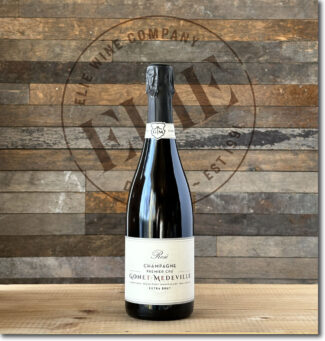 Champagne Gonet-Médeville, Premier Cru Rosé Extra Brut ($77)
Champagne Gonet-Médeville, Premier Cru Rosé Extra Brut ($77)
The cuvée is 70% Chardonnay, 27% Pinot Noir and 3% still Ambonnay Rouge. The wine spends seven months in used barriques and 36 months in bottle without malolactic fermentation, dosed at 3 g/l. The minerality of the Bisseuil and le Mesnil terroirs are at the forefront of this dry, succulent, crisp, peach-toned Champagne; the mousse is delicate, elegant and refreshing. Only 650 cases produced.
Disgorged, May 2021.
Champagne Philipponnat (Premier Cru Mareuil-sur-Aÿ, Grand Cru Aÿ)
Considered one of the best bargains in Champagne, Philipponnat is not only a venerable name in Mareuil-sur-Aÿ, it is one of the last houses to be run by a member of its founding family; Charles Philipponnat is a true Champenois, descended from winemakers, cellarmasters and growers dating back nearly 600 years. His family grew grapes here as early as 1522, and his father René was Chef de Caves at Moët from 1949 to 1977, responsible for 1961 Dom Pérignon among other legends. And the house itself is legendary for having produced the iconic Clos des Goisses, which in the 1930s became the region’s first important single-vineyard Champagne.
Under Charles, Philipponnat has created a portfolio of great wines ranging from two of Champagne’s finest non-vintage Bruts to an expanding number of exceptional Champagnes de terroir. He is responsible for three site-specific cuvées of pure Pinot Noir and, of course, Clos des Goisses remains the heart of the family holdings.
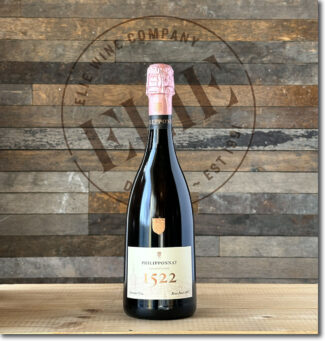 Champagne Philipponnat ‘1522’, 2007 Premier Cru Rosé Brut ($162)
Champagne Philipponnat ‘1522’, 2007 Premier Cru Rosé Brut ($162)
70% Pinot Noir and 30% Chardonnay, with the Pinot Noir coming from the Léon vineyard in Aÿ and the Chardonnay from Le Mesnil-sur-Oger. A silky-textured gem loaded with dried herbs, fresh mint, almond butter and smoky black tea as savory notes and the fruit notes that include white peach, apple, grapefruit and lime.
Bottled June, 2008; disgorged June, 2016; dosage 4.5 grams/liter.
The Villages of
The Vallée de la Marne
Its name is a tip-off: This huge and vital Champagne sub-region follows the Marne River from Tours-sur-Marne to Château-Thierry, stretching over sixty miles and bisecting and two French départements (the Marne and the Aisne) all the way to the limits of Seine-et-Marne. Along the way it penetrates picturesque landscapes of rolling hills, small villages with narrow winding streets and colorful vineyards growing on limestone topsoil overlaying layers of Belemnite and Micraster chalk. More than a hundred villages dot the valley, two of which have been designated ‘Grand Cru’ (Aÿ and Tours-sur-Marne) and many more boast Premier Cru status.
This is Munier country. As with many river valleys, frost is a pronounced a hazard as cold air sinks and follows the flow of water. Temperature drops during bud break can devastate a vintage before it begins (it happened in 2012). Pinot Noir, which buds early, is at particular risk, followed by Chardonnay. Since Munier follows up to a week later, it frequently misses the worst of the frost and is also marginally more resistant to the mildews that thrive in the damp of river fogs.
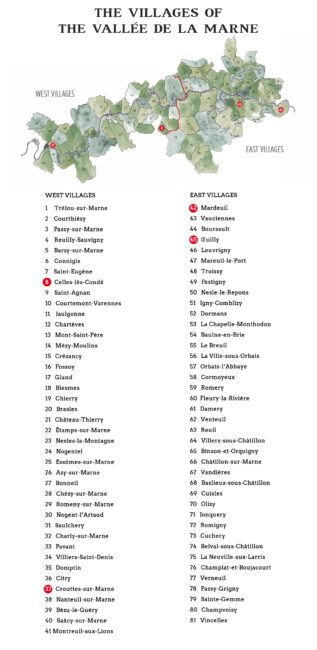
Champagne Bourgeois-Diaz (Village Crouttes-sur-Marne)
For Jérôme Bourgeois, the easy life is not a life worth living. Born in 1977, Jérôme is the fourth generation of a champagne-growing family on his father’s side but it may well be his Spanish ancestry on his mother’s side that flavors the poetic passion of his approach: “Our wines have a different blood—no pesticides, no chemical fertilizers, no violence; the vines are not just tended, they are loved, and over the years, they have recovered their essential nature. And how we work the land is how we work the cellar. We use a traditional press because, instead of extracting the juice of the grapes, it draws it out. More effort, more reward.”
Of Champagne Bourgeois-Diaz’s 17 acres vineyard southwest of Reims in the hills around the town of Crouttes-sur-Marne, old vine Munier and Pinot Noir make up the lion’s share of cultivars.
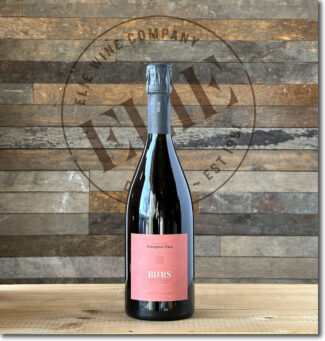 Champagne Bourgeois-Diaz ‘BD’RS’, Rosé de Saignée Brut-Nature ($108)
Champagne Bourgeois-Diaz ‘BD’RS’, Rosé de Saignée Brut-Nature ($108)
100% Meunier harvested from two old loamy plots, one planted in 1960 and the other in 1925. Maceration lasted 22 hours with subsequent vinification, 80% in steel and 20% in fût de chêne. No final dosage at bottling, making it a Brut Nature. Wild red currant shows on the nose with peach, brioche and rose petals; the finish is crushed stones and grapefruit peel offering a twinge of bitterness.
Disgorged June, 2022; dosage 0 grams/liter.
Champagne Vincent Charlot (Village Mardeuil)
Vincent Charlot, who took over his family business in 2001, describes his style as ‘a full concession to my terroirs.’ Spanning six communes, he farms 33 parcels inside the Coteaux d’Epernay, focusing on Pinot Noir, Pinot Meunier and Chardonnay planted within a complex microcosm rich in biodiversity; soils are ‘craie’ (chalk) with variations of clay and silex/chert.
Says Vincent: “All 33 parcels are hand-harvested and vinified separately, resulting in a multitude of cuvées each unique based on the alchemy of fermentation and yeast autolysis. Natural fermentations occur in amphoras and used French oak barrels, and most are free of malolactic fermentation. Secondary bottle fermentation is triggered by concentrated grape must, followed by long lees aging, minimal sulfites levels and low dosage.”
Vincent is one of the very few growers in the area to rely on his own biodynamic preparations; he is a strong advocate that any malady in the vineyard can be managed homeopathically. Adding to the organic approach, his vineyard hosts a rich biodiversity of specie, including wild strawberries and mushrooms that sprout between the vines. “Walking these vineyards is not only a visual experience,” he maintains, “but a spiritual one as well.”
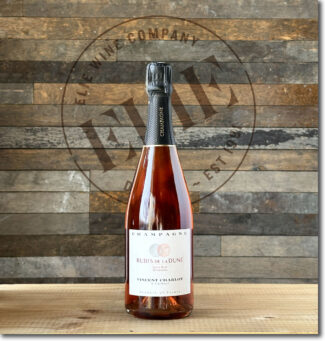 Champagne Vincent Charlot ‘Rubis de la Dune’, 2014 Mardeuil Rosé Extra-Brut ($72)
Champagne Vincent Charlot ‘Rubis de la Dune’, 2014 Mardeuil Rosé Extra-Brut ($72)
20% Pinot Noir and 80% Meunier; Vincent Charlot refers to this style of Champagne as ‘en dentelle’—‘lacy’. The grapes are hand-harvested, destemmed and macerated for 14 hours prior to being pressed and spontaneously fermented in neutral barrels. No malolactic fermentation is allowed; the wine rests in barrels on fine lees for about 9 months before being bottled with liqueur de tirage and aged on lees for at least 36 months for the secondary, disgorged and topped up with a dosage of 4 grams/liter. Vivacious and bright, the wine shows lively strawberry, cherry and graham cracker with crushed stone on the finish.
Bottled May, 2015; disgorged September, 2021.
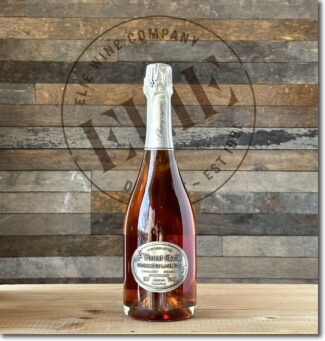 Champagne Vincent Charlot ‘L’Écorché de la Genette’, 2014 Mardeuil Rosé de Saignée Extra-Brut ($99)
Champagne Vincent Charlot ‘L’Écorché de la Genette’, 2014 Mardeuil Rosé de Saignée Extra-Brut ($99)
90% Meunier, 10% Pinot Noir hand-harvested and destemmed and macerated for around 14 hours. Once pressed, the wine ferments spontaneously in neutral barrels and rests on fine lees for about 11 months. Bottled with liqueur de tirage and aged on lees for seven years for the secondary fermentation (prise de mousse), disgorged, and topped up using the same wine with a dosage of 4 grams/liter. Charlot describes the wine as “complex, vinous, structured, round, with a distinctive ‘foresty’ terroir character—spice, leather and underwood. The nose evokes a red from Burgundy with elegant, refined fruit and touch of ‘sauvage.’”
Bottled August, 2015; disgorged February, 2022
Champagne Tarlant (Premier Cru Oeuilly)
Benoît and Mélanie Tarlant are the 12th consecutive generation working the family land, comprised of 35 acres within 31 lieu-dits. Pinot Noir represents half their cultivars followed by 30% Chardonnay and 20% Pinot Meunier along with lesser amounts of Champagne’s ‘forgotten’ grapes’, Pinot Blanc, Arbane and Petit Meslier.
The couple concedes that even their lieux-dits are not sufficiently specific to reflect their terroirs, and have singled out 63 parcels that they vinify individually each vintage, allowing laser-sharp precision in blending decisions for base and reserve wines. At the core of this is a commitment to organics. Says Benoît, “Our father fought to end city garbage being thrown down as a fertilizer, something that took five years. That was his fight. Organics seems to be the challenge of our generation.”
In the cellar, the grapes are gently pressed and racked by gravity to Burgundian barrels, where each parcel ferments and ages individually. Malolactic fermentation almost never occurs but is not blocked: Benoît feels that through careful pressing, attention to temperature and the correct viticultural practices, Champagne’s naturally cold climate gives them grapes with low PH and high acidity, a combo that does not incite malo. Sulfites are only added in microscopic doses at press and intermittently to casks of reserve wine. The wines are never filtered: “Disgorgement is sort of like filtration. If you’re going to take the time to do long élevages and letting the solids deposit themselves, you don’t need to filter. It requires a respect of the rhythm of the wine.”
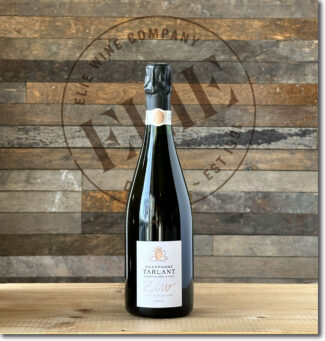 Champagne Tarlant ‘Zéro’, Premier Cru Œuilly Rosé Brut-Nature ($63)
Champagne Tarlant ‘Zéro’, Premier Cru Œuilly Rosé Brut-Nature ($63)
50% Chardonnay, 44% Pinot Noir, 6% Meunier with 14% still Pinot Noir and Meunier in the assemblage. Grapes originate in organically farmed, hand-harvested estate vines across 63 parcels in four villages near Œuilly in the Vallée de la Marne. The focus of Benoît Tarlant’s approach is ‘perfect’ Pinot Noir—the starting point of the wine rather than an addition to a white base. Impeccable in its balance, the wine shows red berries, orange peel, pastry and compelling acidity.
Base wine 2013 vintage; disgorged January, 2019.
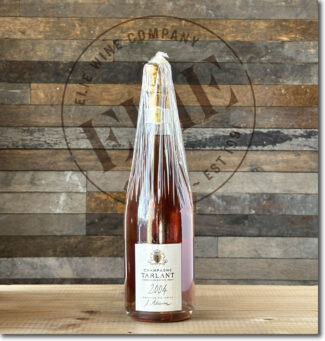 Champagne Tarlant ‘l’Aérienne’, 2004 Premier Cru Œuilly Rosé ($126)
Champagne Tarlant ‘l’Aérienne’, 2004 Premier Cru Œuilly Rosé ($126)
According to Tarlant, the name L’Aérienne evokes the airy, ethereal nature of the 2004 harvest: “It was a vintage that Chardonnay won,” he says.
70% Chardonnay and 30% Pinot Noir; the grapes originate from four parcels across the villages of Œuilly and Celles-lès-Condé on a mix of hard limestone, flint and Sparnacian clay soils with vines averaging 40 years old. The juice ferments spontaneously on native yeasts in Burgundy barrels; the wine does not go through malolactic fermentation and ages for a year in barrel. L’Aérienne was bottled in 2005, disgorged in 2018 and received zero dosage. It shows baked apple, honeycomb, mushroom and dried apricot with a bit of chalk on the finish.
Disgorged March, 2018.
The Villages of
The Montagne de Reims
Forming a broad and undulating headland that covers five thousand acres of thicket and vineyard, the Montagne de Reims stretches 30 miles east to west and, north to south, is about five miles wide. The vines hug the limestone slopes of the western and northern flanks and are planted in a huge semicircle that extends from Louvois to Villers-Allerand.
This is Pinot Noir country (except in Trépail and Villers-Marmery, where the Chardonnay can be found). The most northerly of Champagne’s four demarcated regions, the Montagne de Reims is also the most well-known, with more Grand Cru sites than anywhere else in the AOP. Tectonics gave the region mountains of chalk, and the Romans added their two cents by leaving behind huge limestone pits known as crayères. Within, the humidity remains at around 60% and temperatures at a steady 57°F; perfect cellaring conditions to soften the cold-climate acids of Champagne with time on lees. As a result, Louis Roederer, Ruinart, Veuve Clicquot, Krug, Taittinger and Mumm all store wine here.
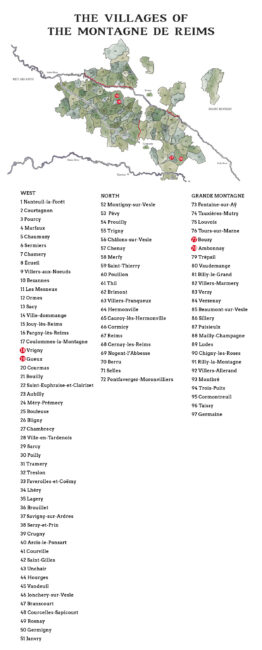
Champagne Marguet (Grand Cru Ambonnay)
Champagne Marguet has been a bellwether for innovation since 1883, the year that Émile Marguet began to graft his vines onto American rootstocks in the face of the impending invasion of phylloxera. Alas, so ridiculed was the notion throughout Champagne that Marguet wound up tearing out the grafted vines and promptly declared bankruptcy.
Ratchet forward a century and a half: In 2006, Émile Marguet’s distant scion Benoît Marguet joined forces with Hervé Jestin, the former chef de cave of Duval-Leroy, and began to produce a special homeopathic and biodynamic super-cuvée called ‘Sapience’, first released in 2013. Being on the cutting edge of trends has finally paid dividends. Today, Benoît farms 25 acres of vines, all using biodynamic practices. Most are owned by Marguet himself while the rest are leased from relatives. Among them are eight different lieux-dits with an average vine age of 42 years; each is bottled under the name of the plot and reflects the minute soil differences that exist throughout his holdings as well as the massal-select varieties he suits to his various terroirs—among them Les Crayères, Les Bermonts, Le Parc and Les Saints Rémys.
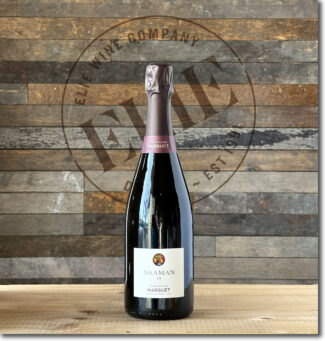 Champagne Marguet ‘Shaman 19’, Harvest 2019 Grand Cru Rosé Brut-Nature ($60)
Champagne Marguet ‘Shaman 19’, Harvest 2019 Grand Cru Rosé Brut-Nature ($60)
23% Pinot Noir, 77% Chardonnay, bottled with no dosage and drawn entirely from Grand Cru parcels in Ambonnay in Bouzy. ‘Shaman’ is a suitably cosmic name for Biodynamic Benoît’s NV line-up, but it’s fairly recent: Formerly called ‘Elements’, there was a trademark conflict with California’s Artesa that drove the name change. The base wine comes from the abbreviated 2017 vintage, which saw rainfall in August that caused a hurry-up harvest to prevent botrytis. The nose is ripe with notes of cherry blossom, white peach and spice while the palate is broad and expansive with rich stone fruit and a firm, concentrated mineral core.
Bottled July, 2020; disgorged October, 2022; dosage 0 grams/liter.
Champagne Pierre Paillard (Grand Cru Bouzy)
Paillard is a familiar name to fans of Champagne; Maison Bruno Paillard, the Reims-based producer, was founded in 1981 by Bruno Paillard and financed by the sale of Bruno’s Mark II Jaguar. The Bouzy branch of the family (they are cousins) have been at it a bit longer; Antoine Paillard first bought Bouzy vineyards in 1768. Antoine and Quentin Paillard represent the eighth generation in the family and the fourth generation to produce and bottle Champagne under the family name.
Bouzy is renowned for producing some of the finest Pinot Noir in Champagne, due in the main to its situation on the south-facing side of the Montagne de Reims, ideal for the difficult to ripen Pinot Noir grape. Nevertheless, unlike most other growers in the appellation, the 25 Paillard acres are planted with 40% Chardonnay, giving their wines both finesse and elegance.
Interestingly, the Paillards exclusively cultivate their own selection of Pinot Noir and Chardonnay, without a single clone on the estate, a diverse Selection Massale. Each plot is harvested and vinified separately in stainless steel vats and fermentation is carried out at lower temperatures to retain the aromatics. Each spring, a long process of tasting and blending is undertaken by Antoine and Quentin; the still wine is tasted, marked and discussed until there is consensus on the profile of the vintage. Blind tastings continue until the creation of each final cuvée. In June they are put into bottle for the second fermentation and cellared for a minimum of 3 years and as much as 10 years before being disgorged.
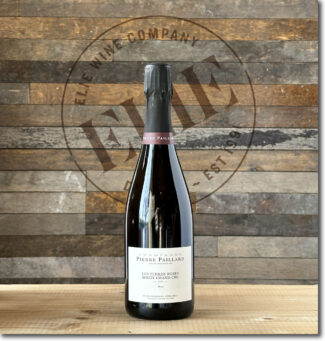 Champagne Pierre Paillard ‘Les Terres Roses XVII’, Grand Cru Bouzy Rosé Extra-Brut ($66)
Champagne Pierre Paillard ‘Les Terres Roses XVII’, Grand Cru Bouzy Rosé Extra-Brut ($66)
64% Chardonnay and 36% Pinot Noir harvested from separate plots, each vinified separately. Fermentations are kept cool and wines age on fine lees in combo of steel and neutral barrel until the early summer to maximize the influence of the oak and to allow natural malolactic fermentation. Secondary fermentation takes place over three years. Elegant rose petal appears on the floral nose, and the palate is ripe with strawberry and watermelon; a fine, creamy mousse showing hints of marzipan.
Base wine, 2017 vintage; disgorged April, 2020; dosage 2 grams/liter.
Champagne André Clouet (Grand Cru Bouzy)
Long known for its sublime Pinot Noir-based Champagnes, the Clouets are a family of winemakers whose origins are lost in the mists of time. What we can say for certain is that it was founded by a printer in the Versailles court of Louis XV and that the phrase that graces the winery’s labels (‘Ancien Regime’) is a tribute to this legacy. It took more than two centuries and several generations of Clouets to find and purchase land in the exquisite terroir of Bouzy in the southern part of the Mountain of Reims.
Under the mastery of Jean-François Clouet, André Clouet has modernized, but the team is inspired to preserve the personality of its Champagne as expressed through the personality of its terroir. Says Jean-François, “During Creation, when God grew weary of sculpting the mountains, razing the deserts and firing up the volcanoes, he treated himself to a few moments of pleasure and designed a little earthly paradise called Bouzy.”
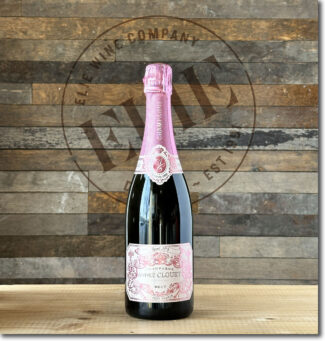 Champagne André Clouet ‘No 3’, Grand Cru Bouzy Rosé Brut ($58)
Champagne André Clouet ‘No 3’, Grand Cru Bouzy Rosé Brut ($58)
92% Pinot Noir, 8% vin rouge from Bouzy; the ‘3’ represents the style of the wine on an odd Clouet scale (inspired by Coco Chanel) where 1 is the lightest wine and 10, the richest. Driven by the chalky minerality of the terroir, the wine offers seductive notes of wild strawberry, raspberry, pomegranate, cherry blossoms, fresh red and pink flowers, crushed chalk, and orange zest.
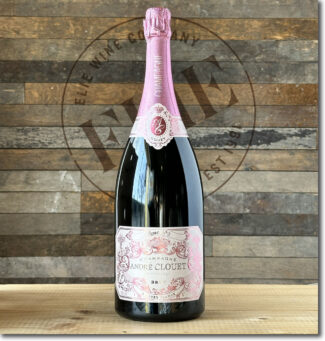 Champagne André Clouet ‘No 3’, Grand Cru Bouzy Rosé Brut ($119) Magnum
Champagne André Clouet ‘No 3’, Grand Cru Bouzy Rosé Brut ($119) Magnum
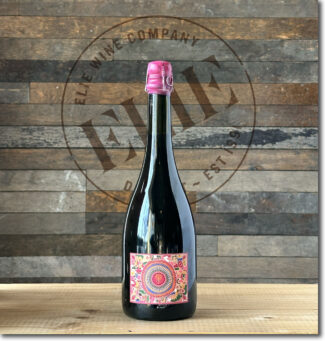 Champagne André Clouet ‘Spiritum 96’, Grand Cru Bouzy Rosé Brut ($72)
Champagne André Clouet ‘Spiritum 96’, Grand Cru Bouzy Rosé Brut ($72)
More mystery numbers to unravel: Says Jean-François Clouet: “Rosés are usually enjoyed while they are still, but I was looking for that complexity and fullness that exceptional wines acquire only after a very long maturation. I didn’t want to offer a rosé that had merely aged well; I wanted to combine the freshness and youth of a rosé wine with the essence of a great Vintage. The key element in accomplishing this feat was going to be the liqueur made from the spectacular 1996 vintage.”
A very low concentration, half that of a classic liqueur —300 grams per liter instead of the 600 grams per liter usual in Champagne—meant that a higher proportion of the Vintage could be added to the finished rosé.
Champagne Lelarge-Pugeot (Premier Cru Vrigny)
The Lelarge family became vineyard owners in 1799, after Pierre-Henri Lelarge married Madeleine Dravigny, the daughter of a winegrower family in Vrigny. They have been producing Champagne since 1930 and today the estate is headed up by seventh-generation Dominique Lelarge along with his wife Dominique Pugeot (no typo; same first name) and their children, who have joined the business.
The family believes in letting the grapes thrive as naturally as possible in order to express the pure essence of terroir. Biodynamic principles are practiced in the vineyard and they were certified organic in 2013. Dominique says, “Soil is alive. The quality of the wine starts in the vineyard. To produce wines of quality and with character, it is vital to respect the life in the soil! This is why, over the last 20 years, step by step, we moved towards organic and biodynamic farming and producing Champagne which respect nature and humans.”
 Champagne Lelarge-Pugeot ‘Lùna Volume III’, 2018 Premier Cru Vrigny Rosé Brut-Nature ($144)
Champagne Lelarge-Pugeot ‘Lùna Volume III’, 2018 Premier Cru Vrigny Rosé Brut-Nature ($144)
Third in a trio of sparkling wines based on the lunar cycles; the Lelarge-Pugeot family claim that it represents their work at its deepest level, being the culmination of biodynamics viticulture and highlighting their continued experiments in natural vinification using only indigenous yeast and natural sugar and no added sulfur. Vol. 3 is a blend of 85% Chardonnay and 15% Pinot Noir from a sunny vintage. A short maceration and nine months of barrel-aging are followed by six years on the lees, resulting in a complex Champagne with aromas of candied strawberry and a long, rich mineral-driven finish.
Disgorged April, 2022; dosage 0 grams/liter.
Champagne Roger Coulon (Premier Cru Vrigny)
Éric and Isabelle Coulon represent the eighth generation of the Coulon family to be engaged as Récoltant-Manipulants, producing Champagne from Vrigny and surrounding villages in the northwest corner of the Montagne de Reims. Says Eric, “Cultivating our vines is a beautiful and proud tradition. The source of our family’s inspiration is here in our vineyards cultivated with organic and agroforestry techniques. This is the place where we Coulons—myself, Éric, Isabelle and our children, Edgar and Louise, all have our roots.”
Using entirely estate fruit, the Coulons draw from the 26 acres they currently have under vine, nearly all located within the Premier Cru rated villages of Vrigny, Coulommes and Pargny, where soils are soft limestone, Sparnacian clay and Thanetian sand. This is only the start of the journey for these grapes: “Fashionable style does not impede the relationship between the terroir, the vines and the wine,” Éric points out. “The ingredients of our success include natural yeasts used for all 109 plots, slow and spontaneous fermentation; seasons reflected in our wines, measured effervescence with dosage only in the Extra-Brut and otherwise un-dosed vintages.”
“Most importantly,” Isabelle adds, “our wine has kept its identity over time, revealing both the unique character of our natural environment and its own particular style.”
 Champagne Roger Coulon ‘Rosélie ‘, Premier Cru Vrigny Rosé de Saignée Brut ($108)
Champagne Roger Coulon ‘Rosélie ‘, Premier Cru Vrigny Rosé de Saignée Brut ($108)
80% Pinot Munier and 20% Pinot Noir from two parcels of old vines, ‘Les Limons’ and ‘Les Linguets’ located in Vrigny and Gueux. The wine ages on fine lees for eight to 10 months in vats and small barrels and the bottles spend up to 5 years on laths. The wine is dry and slightly piquant, with rich tones of ripe strawberry and blackberry followed by warmer aromas of baked bread and a clear, fresh and salty finish.
Disgorged January, 2021; dosage 3 grams/liter.
- - -
Posted on 2024.02.12 in France, Champagne, Wine-Aid Packages
Featured Wines
- Notebook: A’Boudt Town
- Saturday Sips Wines
- Saturday Sips Review Club
- The Champagne Society
- Wine-Aid Packages
Wine Regions
Grape Varieties
Albarino, Albarín Blanco, Albarín Tinto, Albillo, Aleatico, Aligote, Arbanne, Aubun, Barbarossa, barbera, Biancu Gentile, bourboulenc, Cabernet Franc, Caino, Caladoc, Calvi, Carcajolu-Neru, Carignan, Chablis, Chardonnay, Chasselas, Cinsault, Clairette, Corvina, Counoise, Dolcetto, Erbamat, Ferrol, Frappato, Friulano, Fromenteau, Gamay, Garnacha, Garnacha Tintorera, Gewurztraminer, Graciano, Grenache, Grenache Blanc, Groppello, Juan Garcia, Lambrusco, Loureira, Macabeo, Macabou, Malbec, Malvasia, Malvasia Nera, Marcelan, Marsanne, Marselan, Marzemino, Mondeuse, Montanaccia, Montònega, Morescola, Morescono, Moscatell, Muscat, Natural, Niellucciu, Parellada, Patrimonio, Pedro Ximénez, Petit Meslier, Petit Verdot, Pineau d'Aunis, Pinot Blanc, Pinot Gris, Pinot Meunier, Pinot Noir, Pouilly Fuisse, Pouilly Loche, Poulsard, Prieto Picudo, Riesling, Rondinella, Rose, Rousanne, Roussanne, Sagrantino, Sauvignon Blanc, Savignin, Sciacarellu, Semillon, Souson, Sparkling, Sumoll, Sylvaner, Syrah, Tannat, Tempranillo, Trebbiano, Trebbiano Valtenesi, Treixadura, Trousseau, Ugni Blanc, vaccarèse, Verdicchio, Vermentino, Xarel-loWines & Events by Date
- July 2024
- June 2024
- May 2024
- April 2024
- March 2024
- February 2024
- January 2024
- December 2023
- November 2023
- October 2023
- September 2023
- August 2023
- July 2023
- June 2023
- May 2023
- April 2023
- March 2023
- February 2023
- January 2023
- December 2022
- November 2022
- October 2022
- September 2022
- August 2022
- July 2022
- June 2022
- May 2022
- April 2022
- March 2022
- February 2022
- January 2022
- December 2021
- November 2021
- October 2021
- September 2021
- August 2021
- July 2021
- June 2021
- May 2021
- April 2021
- March 2021
- February 2021
- January 2021
- December 2020
- November 2020
- October 2020
- September 2020
- August 2020
- July 2020
- June 2020
- May 2020
- April 2020
- March 2020
- February 2020
- January 2020
- December 2019
- November 2019
- October 2019
- September 2019
- August 2019
- July 2019
- June 2019
- May 2019
- April 2019
- March 2019
- February 2019
- January 2019
- December 2018
- November 2018
- October 2018
- September 2018
- August 2018
- July 2018
- June 2018
- May 2018
- April 2018
- March 2018
- February 2018
- January 2018
- December 2017
- November 2017
- October 2017
- September 2017
- August 2017
- July 2017
- June 2017
- May 2017
- April 2017
- March 2017
- February 2017
- January 2017
- December 2016
- November 2016
- October 2016
- September 2016
- August 2016
- July 2016
- June 2016
- May 2016
- April 2016
- March 2016
- February 2016
- January 2016
- December 2015
- November 2015
- October 2015
- September 2015
- August 2015
- July 2015
- June 2015
- May 2015
- April 2015
- March 2015
- February 2015
- January 2015
- December 2014
- November 2014
- October 2014
- September 2014
- August 2014
- July 2014
- June 2014
- April 2014
- March 2014
- February 2014
- January 2014
- December 2013
- November 2013
- October 2013
- September 2013
- August 2013
- July 2013
- June 2013
- May 2013
- April 2013
- March 2013
- February 2013
- January 2013
- December 2012
- November 2012
- October 2012
Search



